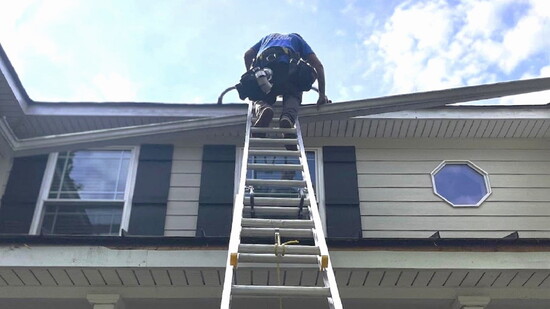United Veterans Roofing crews are helping homeowners prepare their exteriors for the cold winter months and any urgent weather factors that come along with them.
This Newtown-based, full-service exterior services company performs replacement and emergency repairs for residential and commercial properties — using a variety of materials, from slate to metal to asphalt — throughout Greater Philadelphia and New Jersey. Their expertise includes residential and commercial roofs, gutters and siding, and they offer affordable financing options and exclusive discounts for veterans.
According to Amanda Capoferri, UVR sales and marketing manager, winter conditions require additional measures for exterior home care. Here are her four expert tips for keeping homes safe and functioning properly.
267.908.9099
UnitedVeteransRoofing.com
CLEAN GUTTERS REGULARLY
Clogged gutters can damage every part of a home’s exterior from the roof to walls to the foundation. Keep a close eye on them, especially in the fall when falling leaves and frozen water can add weight, causing the gutters to sag or pull away from the house and require replacement.
GET ROOF INSPECTED
Roofs have telltale signs that they're nearing the end of their lifetime usefulness. Amanda recommends getting a roof inspection prior to colder months, particularly if one isn't sure of the roof's age or its true condition. During the inspection, a technician checks the protective barrier on the shingles that prevents leaks.
TRIM OVERHANGING BRANCHES
Though not part of the house itself, tree limbs coming down in the winter due to the weight of snow can cause holes, scratches or breaking of the shingles, and the possibility of falling onto the roof. Anything that's overhead the roof should be cut back to avoid these possibilities over the winter, and truly the rest of the year as well.
CHECK VENTILATION AND INSULATION
Insulation is crucial for preventing heat from escaping, which allows sitting snow on roofs to melt and refreeze. A properly insulated roof shouldn’t have melt spots in the snow; rather, the snow should cover the roof like a blanket. Snow acts as a natural insulator for roofs by trapping air, which helps prevent heat loss and maintain a more stable indoor temperature.
